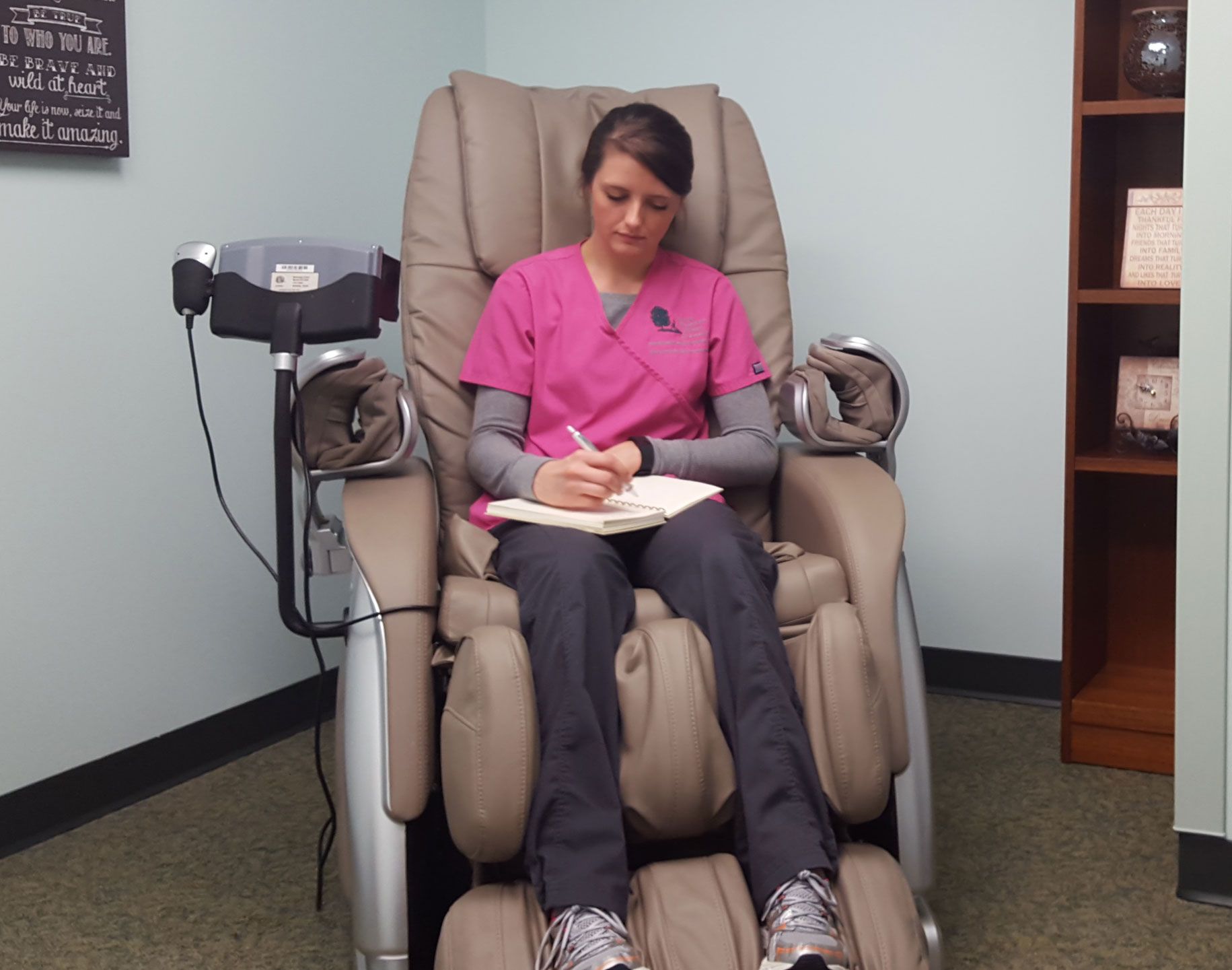More Than a Break Room: A Quiet Place to Recharge and Renew
It started with one oncology nurse’s inspiration—and a closet. That simple idea has grown into a “renewal room” on every clinical floor of the newly built inpatient tower at Cancer Treatment Centers of America at Midwestern Regional Medical Center, a place where nurses can retreat to relax, take a mindful pause, and find a few minutes for themselves.
Jennifer A. Wenzel, PhD, RN, CCM, FAAN

Jillianne Shriver, BSN, RN
It started with one oncology nurse’s inspiration—and a closet. That simple idea has grown into a “renewal room” on every clinical floor of the newly built inpatient tower at Cancer Treatment Centers of America (CTCA) at Midwestern Regional Medical Center, a place where nurses can retreat to relax, take a mindful pause, and find a few minutes for themselves.
The renewal room project was the inspiration of CTCA at Midwestern, board-certified nurse, Jillianne Shriver, BSN, RN, who after finishing her holistic training in 2013, searched for a space within the hospital where she could share with her coworkers what she had learned about the many benefits associated with nurses finding the time and space for self-care, self-responsibility, spirituality, and reflection. Even with space in high demand within the expanding hospital, Shriver discovered a spacious closet that could be repurposed, and the renewal room found its first home.
Now there are several rooms throughout the hospital, and they feature a massage chair, music and aromatherapy, yoga, journals, and inspiration books where nurses can leave thoughtful words of encouragement for their peers who come in later and may need a boost.
“It was important that we have a variety of options for nurses, so they could use what works for them to relax. To help nurses truly reconnect, we ask them to enter the room without their pagers and their phones, so there are no interruptions,” added Shriver.
Nurses can stay in the room for up to 15 minutes, and the initiative has proven quite popular. Shriver collected data when her initial “renewal room” pilot launched in May 2013, using a Likert scale to record nurse stress levels before entering the room and after they left: 96% of the nurses reported that their stress levels had dropped after utilizing the room, and within 3 months the room had been used more than 422 times. Shriver said the hope is that when nurses emerge from this brief respite, “they can have a clear mind and be more emotionally present to serve their patients and their families.”
Renewal Room

Institutional buy-in was essential to the project’s success, and Shriver credits the hospital’s nursing administration, which wholeheartedly backed her idea and understood its value in supporting an ethos of patient-centered care.
“If you want to provide an environment of healing and hope to your patients and families, you also have to provide that kind of environment to your employees,” explained Jacklynn Lesniak, MS, BSN, RN, senior vice president of Patient Care Services and chief nursing officer at CTCA at Midwestern.
Lesniak and colleagues had reviewed the research, which found a high rate of compassion fatigue among oncology nurses: “What [the research] found with compassion fatigue in a hospital setting was emotional exhaustion, deep personalization of their care, and a decreased sense of professional accomplishment.”
“We looked at those items and said, ‘wow,’” Lesniak continued. “As a Magnet-recognized hospital, we are a premier provider of nursing care and our patient satisfaction scores reflect our efforts; however, we knew we needed to elevate what we were doing, and really look at how we can provide tools and techniques for our staff to practice self-care.”
The right placement of the rooms was essential, Lesniak stressed, so that a minimum of travel time would be required for busy nurses. With that in mind, a designated space on each unit close to where nurses work was built into the plans for the new inpatient tower which opened in November 2015.
Conceptually, Lesniak added, it’s important that nurses don’t think of the renewal rooms as “just another break room.”
“Our team is very supportive on the floors,” concurred Shriver. “We have unit shift leaders who are able to read each other and will say, ‘You look like you need to take a few minutes. I’ll take your phone. I’ll watch your patients. Go take a few minutes and restart, recharge, refresh, and do whatever you need to do for yourself.”

Innovative Program Reduces Nurse Turnover and Fosters Development
Published: September 12th 2024 | Updated: September 12th 2024The US Oncology Network (The Network) has developed one of the most comprehensive programs in the nation to support the professional development and retention of new oncology nurses.


